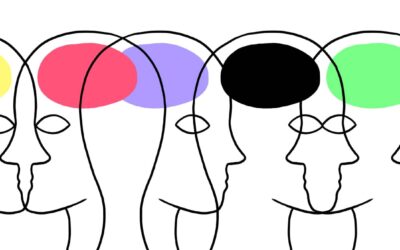“An autism diagnosis is life changing, not life defining.”
So you have seen a few autistic traits in your child, maybe they are not reaching certain developmental milestones or maybe they are not responding to their name… .. now what? Studies have shown that many parents can take up to 3 and a half years before they obtain an official diagnosis, why? This is due to a number of factors- figuring out if it is autism or Aspergers, waiting lists to make appointments with health professionals, financial struggles and the fact that many health care professionals provide parents with very different responses. One doctor might say “wait and see” while another might recommend early intervention services. *Red flag: anyone who says “let’s just wait and see” about your child’s development. Early intervention is so important and the sooner you take action the better.
Once parents have an official diagnosis, many are left in the dark on what to do after their child is diagnosed so I have compiled 10 steps you are able to implement:
- Take time to process your emotions:
It is completely natural to dive into this new world, research everything about autism and start contacting health professionals. However, you need to take a step back and process your emotions and feelings (this is different for everyone- some are angry, confused, upset or overwhelmed. Others are relieved.) You cannot pour from an empty cup and you cannot be in the wrong headspace when you start this journey. Work through your thoughts, establish coping mechanisms that work for yourself and only then are you able to create a plan of action.
- Learn more about ASD:
Start reading up about autism and familiarize yourself with what autism is, what it could mean for your child and how this could impact their upbringing. TIP: read as widely from as many different sources as possible. Do not base all your knowledge off one source. Many people have very different outlooks and opinions on ASD, types of therapy etc. so it is crucial to gather as much info as possible before forming your own opinion.
- Start building a structured team for your child:
Every child is different, therefore every child’s team will look different. One child might only require a facilitator while another might require a speech therapist and an occupational therapist. It is crucial to find a doctor you trust, specifically if you are wanting to start with biomedical treatment.
- Start reaching out:
Many parents feel a sense of isolation and loneliness following the first few months of official diagnosis. Start researching and reaching out to various ASD support groups in your area. A good idea is also to start reaching out to ASD organizations- they will be able to refer you to the necessary resources you are looking for.
- Create a healthy and structured environment for your child:
Changing your child’s environment is key in their optimal development. A child cannot learn in an environment not suited to their specific needs. A few examples of altering their environment: Introducing a timer (this ensures smooth transitions from one task to the next), making visual schedules (autistics thrive visually) as well as creating a structures routine for your child (routine and structure is very important).
- Pay attention to your child’s triggers, strengths and weaknesses:
Not only does it help to understand your child more, it is crucial to convey this info to your child’s team (therapists, teachers and health professionals). By them knowing these, it makes it so much easier for them to work with your child.
- Start making a list of motivators:
Motivators are essential in the optimal development of your child. These include anything your child is passionate about or loves. Start making a list of their favourite toys, the places they love to go to, their favourite food and activities. Motivators promote learning through positive reinforcement.
- Visuals, visuals, visuals!
Most autistics process information visually and are visual learners. Visuals ensure autistics are able to choose how to respond appropriately. This provides your child with a sense of autonomy- which is essential in their development. Start by buying or making visuals of all your child’s motivators. Prompt them to use them appropriately. Employing visual schedules e.g. a step by step schedule on how to use the toilet or how to make a sandwich helps the child know exactly what to do next.
- Create a reward system:
An example of a reward system is using a token board. Implement a system where after your child receives 5 tokens they get a motivator e.g. their favourite toy ( make sure they have not had access to this for a period of time. This makes the item a highly preferred item which will motivate your child to receive their tokens as quickly as possible.
- Create a sensory downtime corner:
Create a dedicated space in their room or any area of the house that has minimal distractions. A little tent filled with all their sensory items they love is an excellent way to regulate your child. By creating this space you are creating a coping mechanism for you child to go to when they feel overwhelmed or dysregulated.



0 Comments